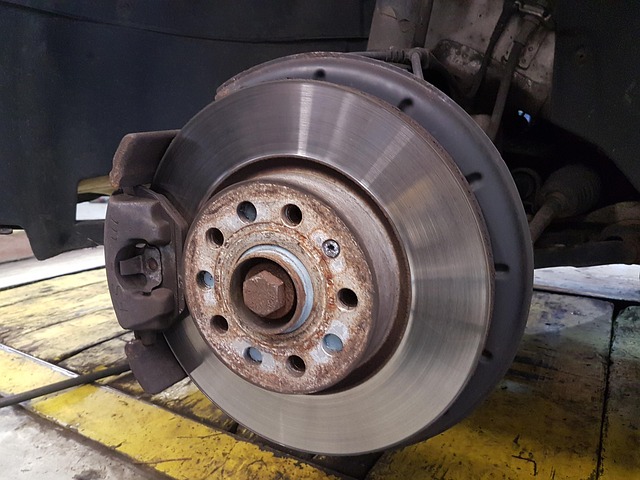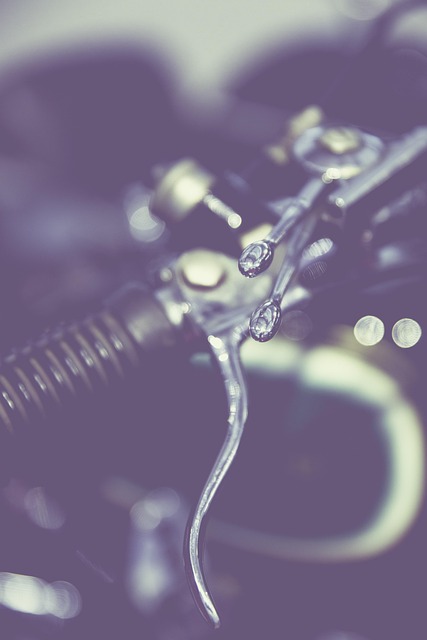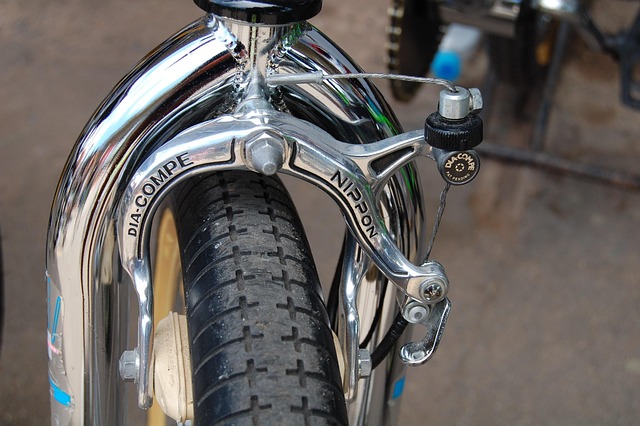Brake wear is influenced by driving conditions and vehicle type. Selecting brake replacements involves evaluating needs, vehicle architecture, performance, safety tech like ABS, and compatibility. Options range from whole car brake jobs to specific upgrades like ABS pump replacement or converting to disc brakes. Regular maintenance, high-quality parts, and inspections are key for optimal safety and performance in selecting brake replacements.
Looking to enhance your vehicle’s safety? Upgrading brakes is a crucial step. This comprehensive guide explores how to improve safety with new brakes, covering everything from understanding brake wear and tear to selecting the best replacement options. We’ll walk you through factors to consider, different types of brakes, and installation & maintenance tips. By the end, you’ll be equipped to make informed decisions when it comes to selecting brake replacements for optimal driving safety.
- Understanding Brake Wear and Tear
- Factors to Consider When Choosing New Brakes
- Types of Brake Replacements: Advantages and Disadvantages
- Installing and Maintaining Modern Brake Systems
Understanding Brake Wear and Tear

Brake wear and tear is a natural part of driving, but it’s crucial to understand how and why brakes degrade over time. Regular use causes friction between the brake pads and rotors, leading to gradual wear. Over time, this can result in reduced braking effectiveness, which increases the risk of accidents. Different driving conditions, such as frequent city driving or long-distance highway travel, contribute uniquely to brake wear. For instance, stop-and-go traffic in urban areas exerts more strain on brakes than steady-speed driving on highways.
When considering select brake replacements, it’s essential to assess your specific needs and driving habits. A front brake upgrade might be necessary if you frequently encounter heavy traffic or drive a vehicle with front-wheel drive. Conversely, air brake solutions could be more suitable for commercial vehicles or those who tow heavy loads, as they offer superior stopping power in such scenarios. Additionally, keeping an eye on tire and brake packages that provide comprehensive maintenance can help ensure optimal safety while reducing long-term costs.
Factors to Consider When Choosing New Brakes

When considering new brakes, several factors come into play to ensure enhanced safety and optimal performance. The first step in selecting brake replacements is understanding your specific needs based on vehicle type and driving conditions. For instance, electric vehicle braking systems require different materials and technologies due to their unique energy recovery mechanisms. Similarly, motorcycle brake maintenance involves choosing between various options like disc or drum brakes, each with its advantages for two-wheelers.
Additionally, the performance characteristics of new brakes should be evaluated. This includes considering factors like braking power, heat dissipation capabilities, and wear resistance. Modern brake systems often incorporate advanced technologies like ABS (Anti-lock Braking Systems) and EBD (Electronic Brake Distribution) to improve safety further. Moreover, checking for compatibility with your existing vehicle’s braking architecture and ensuring proper fitment is crucial during the selection process of replace car brakes.
Types of Brake Replacements: Advantages and Disadvantages

When considering select brake replacements, understanding the different types and their unique advantages and disadvantages is crucial. One common option is the whole car brake job, which involves replacing all braking components—from pads and rotors to calipers and wheel cylinders—at once. This comprehensive approach ensures optimal performance across the entire disc brake system, enhancing safety and reducing the risk of inconsistent braking.
However, a more specific upgrade could be an ABS pump replacement. Anti-lock Braking Systems (ABS) prevent wheels from locking up during hard stops, ensuring better control and stability. Replacing the ABS pump can significantly improve this critical safety feature, especially in challenging driving conditions or emergency situations. While it targets a specific part, this repair is less disruptive than a whole car brake job and focuses on enhancing a single but vital aspect of overall braking efficiency.
Installing and Maintaining Modern Brake Systems

Installing modern brake systems offers a significant upgrade to vehicle safety, but proper maintenance is key to keeping them in optimal condition. When selecting brake replacements, drivers should consider both quality and compatibility. High-performance brake pads and rotors can enhance stopping power and reduce wear, ensuring consistent performance throughout their lifespan. Regular inspections are vital, especially for critical components like the emergency brake system, to identify any signs of damage or deterioration early on.
Affordable brake replacements don’t always mean compromising on safety. Many aftermarkets offer excellent value without sacrificing quality. For vehicles equipped with drum brakes, a conversion to disc brakes can improve stopping efficiency and overall performance. This upgrade is particularly beneficial for those who frequently encounter harsh driving conditions, ensuring better control and reduced maintenance concerns in the long run.
Upgrading your brakes with modern systems is a strategic move to enhance vehicle safety. By understanding brake wear, considering specific needs, and choosing the right replacement options like disc or drum brakes, you can ensure optimal performance. Installation and regular maintenance are key; these steps allow for maximum stopping power and prolonged brake life. When selecting brake replacements, prioritizing safety should be at the forefront, enabling drivers to navigate with confidence and peace of mind.
